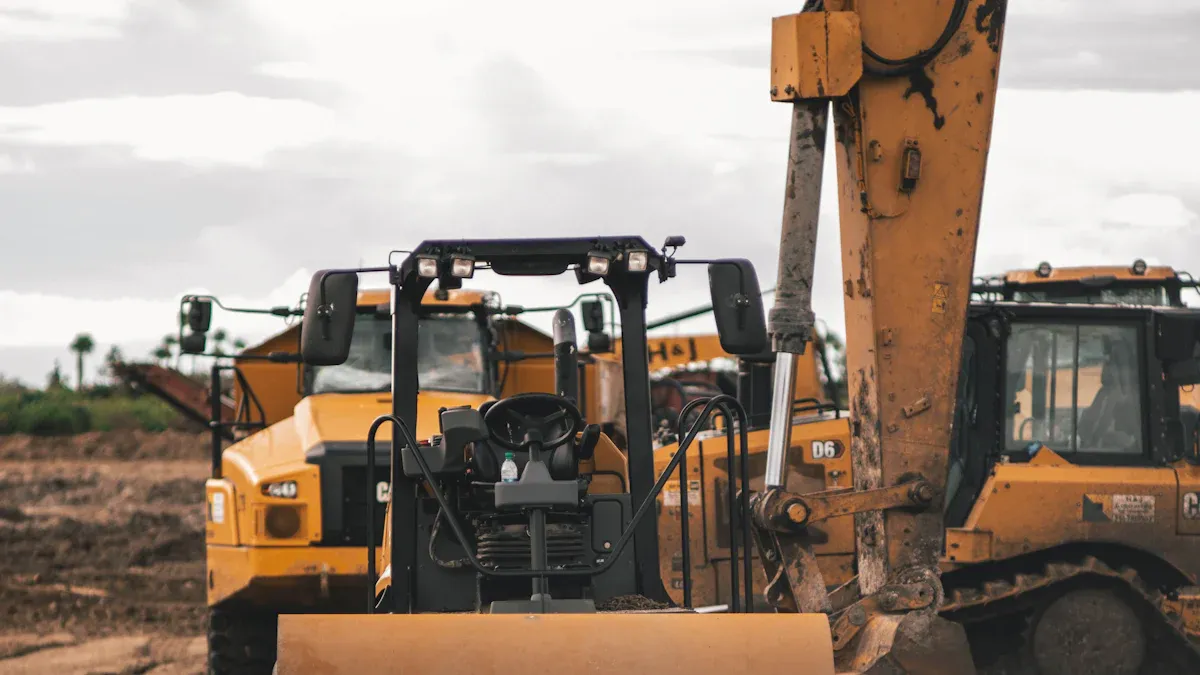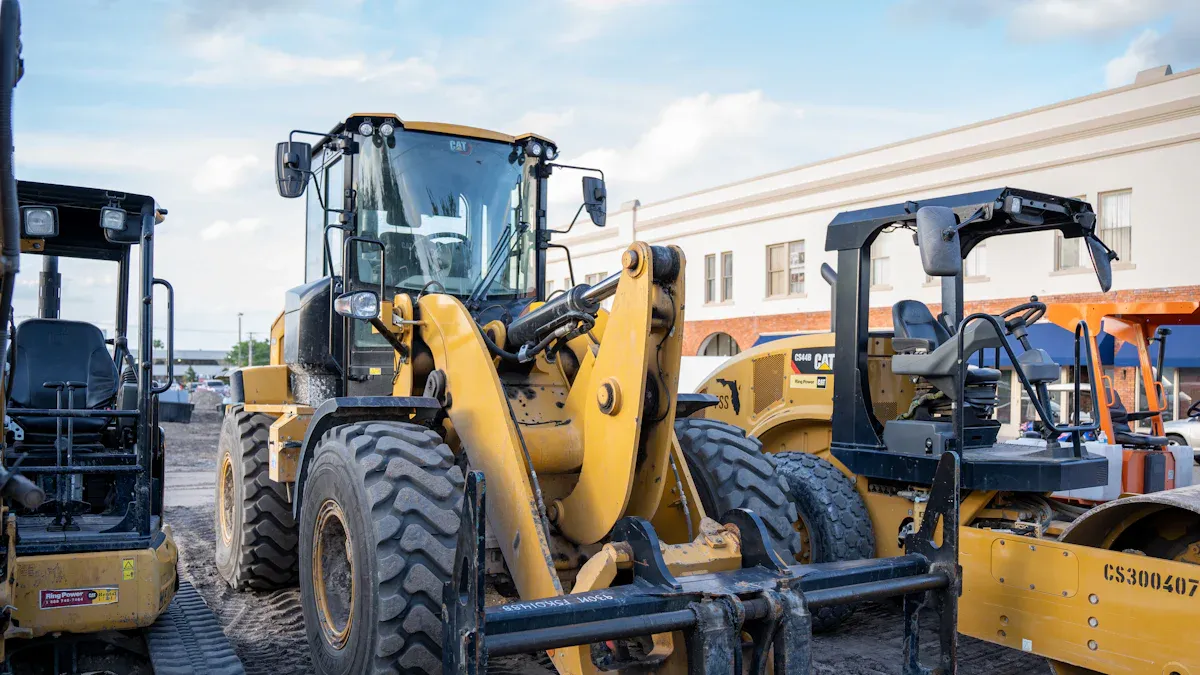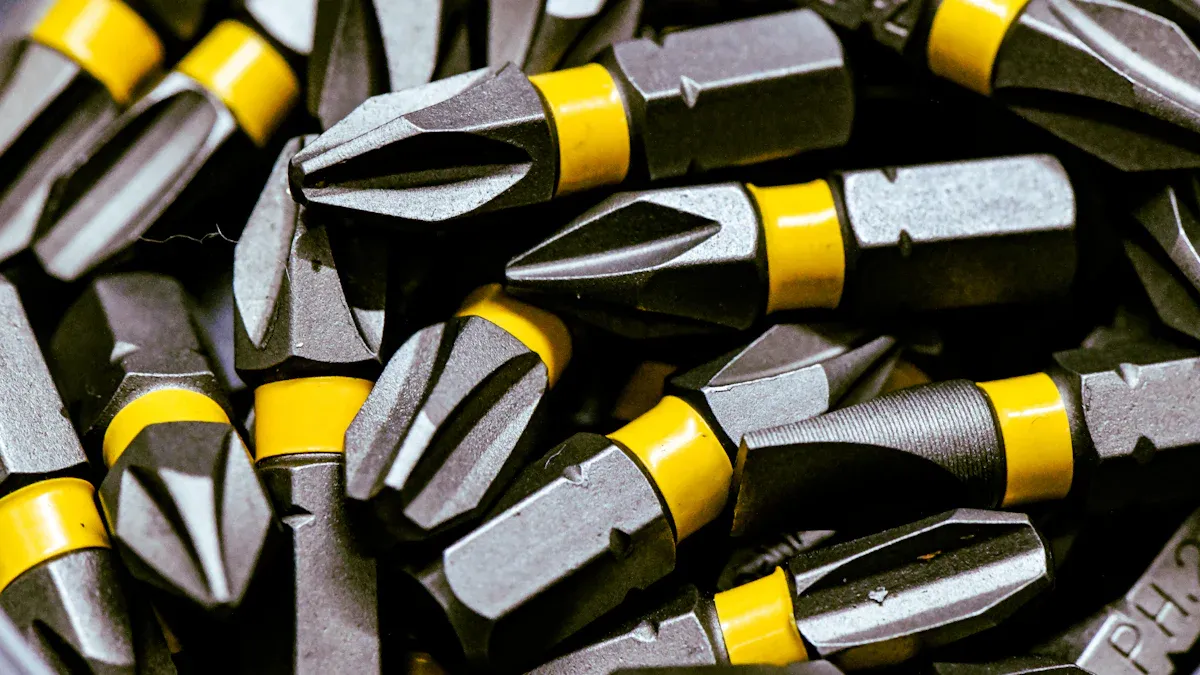
Ground engaging tools play a critical role in industries like construction and mining. Lightweight designs prioritize efficiency and ease of handling, while heavy-duty alternatives focus on durability and strength. Their impact extends beyond performance, influencing sustainability and long-term operational costs. Understanding these differences helps professionals make informed decisions that align with evolving industry demands.
Key Takeaways
- Lightweight tools work faster and use less fuel, helping industries save energy.
- Heavy-duty tools are very strong for tough jobs but need regular care to stay safe and work well.
- Hybrid tools mix lightweight and strong features, making them useful and eco-friendly for building and mining.
Lightweight Ground Engaging Tools

Benefits of Lightweight Designs
Lightweight ground engaging tools offer several advantages that make them a preferred choice in many industries. One of the most significant benefits is their ability to enhance operational efficiency. By reducing the overall weight of machinery, these tools contribute to lower fuel consumption, which directly impacts cost savings and environmental sustainability. Additionally, lightweight designs improve maneuverability, allowing operators to handle equipment with greater precision and ease.
Recent advancements in material innovation have further amplified these benefits. Manufacturers now utilize high-strength, lightweight materials that maintain durability while reducing weight. This shift has led to tools that perform exceptionally well under standard operating conditions. The following table highlights key industry trends and performance metrics supporting the advantages of lightweight designs:
| Trend/Metric | Description |
|---|---|
| Material Innovation | Manufacturers are focusing on lightweight and high-strength materials to enhance performance. |
| Efficiency Improvement | Lightweight tools lead to better machine efficiency and reduced fuel consumption. |
These benefits demonstrate why lightweight ground engaging tools are gaining traction in industries like construction and mining. Their ability to balance performance with sustainability makes them a forward-thinking choice for modern operations.
Challenges of Lightweight Designs
Despite their advantages, lightweight ground engaging tools face certain challenges, particularly under extreme conditions. One notable issue is their susceptibility to increased stress and deformation when subjected to heavy loads. While manufacturers have optimized designs to address these concerns, some limitations persist. For example:
- The maximum stress increased by 5.09% and maximum deformation by 8.27% after optimization, yet both remained within acceptable limits for boom structure design.
- The excavator’s working device experiences high-cycle fatigue, necessitating fatigue calculations using advanced software like OptiStruct.
- A peak stress of 224.65 MPa was recorded at a specific connection point in the boom, indicating potential for further optimization as other areas showed lower stress levels.
These challenges highlight the need for continuous innovation in lightweight tool design. By addressing these limitations, manufacturers can ensure that these tools remain reliable even in demanding environments. Ningbo Digtech (YH) Machinery Co.,Ltd. has been at the forefront of such advancements, leveraging cutting-edge technology to create tools that balance weight, strength, and durability.
Heavy-Duty Ground Engaging Tools

Strengths of Heavy-Duty Designs
Heavy-duty ground engaging tools are engineered to excel in the most demanding environments. Their robust construction allows them to withstand significant digging forces and high breakout pressures, making them indispensable for tasks involving compacted, rocky, or frozen materials. These tools are designed to resist wear and abrasion, which reduces replacement frequency and enhances operational productivity.
The durability of heavy-duty designs stems from the use of high-strength materials like steel, which offers an exceptional strength-to-weight ratio. Structural elements are optimized to distribute loads effectively, ensuring stability and reliability during operations. The following table highlights key factors contributing to the longevity and performance of heavy-duty tools:
| Factor | Description |
|---|---|
| Material Strength | High-strength materials like steel ensure durability under extreme conditions. |
| Structural Design | Optimized load-bearing elements distribute stress evenly. |
| Foundation Stability | Stable foundations prevent structural failures during heavy operations. |
| External Forces | Designs account for wind, seismic activity, and other external forces. |
| Maintenance and Durability | Regular inspections and durable materials maintain performance over time. |
These strengths make heavy-duty tools a reliable choice for industries requiring consistent performance under challenging conditions.
Limitations of Heavy-Duty Designs
Despite their advantages, heavy-duty ground engaging tools come with certain limitations. Their robust construction often results in increased weight, which can lead to higher fuel consumption and reduced maneuverability. Additionally, these tools require rigorous maintenance to ensure safety and performance.
In 2019, the United States recorded 5,333 fatal work injuries, many of which occurred in construction and extraction occupations. This statistic underscores the importance of adhering to strict maintenance schedules and safety standards when operating heavy-duty tools. Regular inspections and timely repairs are essential to prevent accidents and extend the lifespan of these tools.
While heavy-duty designs offer unmatched durability, their operational costs and maintenance demands highlight the need for careful planning. Ningbo Digtech (YH) Machinery Co.,Ltd. addresses these challenges by developing innovative solutions that enhance performance while minimizing operational drawbacks.
Innovations in Ground Engaging Tools
Advanced Materials and Manufacturing Techniques
Innovations in materials and manufacturing techniques are transforming the ground engaging tools industry. Manufacturers are increasingly adopting advanced composites and alloys to create tools that are both lightweight and durable. These materials enhance wear resistance, allowing tools to perform efficiently in abrasive environments. For example, tungsten carbide coatings are now widely used to extend the lifespan of cutting edges.
Modern manufacturing processes, such as additive manufacturing (3D printing), enable precise designs that optimize tool performance. This technique reduces waste and accelerates production timelines, making it a sustainable choice for the industry. Ningbo Digtech (YH) Machinery Co.,Ltd. leverages these advancements to produce tools that meet the rigorous demands of construction and mining operations.
Smart Technologies and Automation
Smart technologies and automation are reshaping how ground engaging tools operate. Tools equipped with sensors now provide real-time performance data, enabling predictive maintenance and minimizing downtime. This innovation reduces maintenance costs and boosts productivity, making it invaluable for large-scale construction projects.
Automation is also driving demand for high-performing tools. As construction companies adopt autonomous machinery, tools must integrate seamlessly with these systems to ensure efficiency and durability. The industry’s shift toward digital technologies highlights the importance of investing in advanced tools to remain competitive.
Examples of Cutting-Edge Designs
Recent designs showcase the potential of innovation in ground engaging tools. Hybrid tools combine lightweight materials with heavy-duty features, offering versatility across various applications. Smart attachments equipped with GPS tracking and automated adjustment systems are gaining popularity for their precision and ease of use.
Ningbo Digtech (YH) Machinery Co.,Ltd. exemplifies innovation by developing tools that incorporate advanced materials and smart technologies. Their products demonstrate how cutting-edge designs can enhance performance while addressing sustainability goals.
Sustainability in Ground Engaging Tools
Eco-Friendly Materials and Processes
The adoption of eco-friendly materials and processes is transforming the production of ground engaging tools. Manufacturers are increasingly focusing on reducing the environmental impact of their operations by utilizing sustainable materials and optimizing production methods. Life-cycle assessments (LCA) play a crucial role in this shift. These comprehensive evaluations analyze the environmental effects of a product throughout its entire life cycle, from raw material extraction to disposal. By identifying areas for improvement, LCAs help manufacturers modify production processes to minimize environmental harm.
For example, the use of recycled metals and biodegradable coatings has gained traction in the industry. These materials not only reduce waste but also lower the carbon footprint associated with manufacturing. Additionally, advanced production techniques, such as precision machining and additive manufacturing, further enhance sustainability by minimizing material waste and energy consumption. Companies like Ningbo Digtech (YH) Machinery Co.,Ltd. are leading the way by integrating these eco-friendly practices into their operations, setting a benchmark for the industry.
Energy Efficiency in Tool Design
Energy efficiency has become a critical consideration in the design of ground engaging tools. By optimizing tool geometry and material composition, manufacturers can reduce the energy required for operation, leading to significant environmental and economic benefits. Improved energy efficiency directly contributes to reduced greenhouse gas emissions, enhancing outdoor air quality and mitigating climate change.
Key statistics highlight the importance of energy efficiency in industrial applications:
- Buildings and facilities account for about 40% of total energy consumption in the U.S.
- Approximately 74% of the electricity produced annually in the U.S. is consumed by these structures.
- Energy use in commercial and industrial buildings contributes to 19% of carbon dioxide emissions, 12% of nitrogen oxides, and 25% of sulfur dioxide emissions.
These figures underscore the need for energy-efficient designs in tools and equipment. By reducing power usage, manufacturers can lower operational costs and environmental impact. Ningbo Digtech (YH) Machinery Co.,Ltd. exemplifies this approach by developing tools that combine high performance with energy-saving features, ensuring long-term sustainability.
The Role of Hybrid Designs in the Future
Hybrid designs represent the future of ground engaging tools, blending the strengths of lightweight and heavy-duty features to create versatile solutions. These tools utilize advanced materials and innovative engineering to achieve a balance between durability and efficiency. For instance, hybrid tools may incorporate lightweight composites for reduced weight while reinforcing critical areas with high-strength alloys to withstand heavy loads.
The integration of smart technologies further enhances the functionality of hybrid designs. Sensors and automation systems enable real-time monitoring and adjustments, ensuring optimal performance across various applications. This adaptability makes hybrid tools ideal for industries that demand both precision and resilience.
As the industry moves toward sustainability, hybrid designs will play a pivotal role in reducing environmental impact. By combining eco-friendly materials with energy-efficient features, these tools align with global efforts to combat climate change. Ningbo Digtech (YH) Machinery Co.,Ltd. continues to innovate in this space, delivering cutting-edge solutions that meet the evolving needs of modern industries.
The future of ground engaging tools lies in balancing lightweight efficiency with heavy-duty durability. Selecting the right tool for specific applications ensures optimal performance and cost-effectiveness. Market projections indicate significant growth, driven by rising construction and mining activities. Sustainability and smart technologies will shape the evolution of these tools. Ningbo Digtech (YH) Machinery Co.,Ltd. leads this transformation by delivering innovative, eco-friendly solutions that meet industry demands.
FAQ
What factors should professionals consider when choosing between lightweight and heavy-duty tools?
Professionals should evaluate the application’s demands, including load capacity, durability, and efficiency. Environmental conditions and operational costs also play a critical role in decision-making.
How do hybrid designs benefit industries like construction and mining?
Hybrid designs combine lightweight efficiency with heavy-duty durability. This balance enhances versatility, reduces environmental impact, and ensures optimal performance across diverse applications.
Why is sustainability important in ground engaging tools?
Sustainability reduces environmental harm and operational costs. Eco-friendly materials, energy-efficient designs, and innovative processes align with global efforts to combat climate change.
Post time: May-12-2025